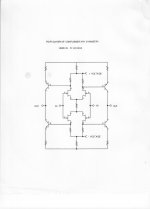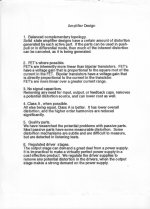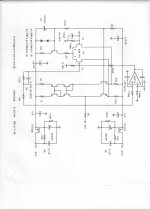Then again, (some) Germans use the same word for cash as for coal.
Like Russians call dollars "cabbage"? 🙂
Hold your head up!
Keith Richards describing how they recorded "Jumpin' Jack Flash".
“Both acoustics (guitars) were put through a Philips cassette recorder. Just jam the mic right in the guitar and play it back through an extension speaker.”
Hi,
In German money (Geld) and gold (Gold) are separate words, but quite likely related.
Ciao T
The Yiddish word "gelt" (which is probably derived from one of the German dialects) denotes both the metal gold and money.
In German money (Geld) and gold (Gold) are separate words, but quite likely related.
Ciao T

SY has already mentioned no politics a few posts ago so let's listen to him and your posts won't disappear.
So, small change is "gelding"? Sorry, couldn't resist....In German money (Geld)
You should be able to recognize the schematic as the fundamental topology of the Parasound JC-2, Gale Amp (1976), etc, etc. It is important to analyze the ESSENCE of a design at its most simple level, to see its advantages and disadvantages. This schematic is about 20 years old.
The commentary comes from the same time period, the early 1990's as a guideline for Parasound engineers to note, in general, when attempting to understand my designs.
The commentary comes from the same time period, the early 1990's as a guideline for Parasound engineers to note, in general, when attempting to understand my designs.
The two previous messages are made as offering something to talk about.
What's shown looks like a comparator. The outputs are railed one way or the other.
And YOUR circuits are NOT 'railed' without a feedback loop or servoing?
So this is not a complete circuit, we do not know how much feedback is used or the closed loop configuration.
Last edited:
An alternative circuit, slightly more complete. Good for comparison.
But that's not even remotely full complimentary symmetry.
🙂... I find words that remain in active use in english but have left the general use in German.
OT, but you don't have to look too hard to find some real throwbacks in English as it is spoken.
Everyday example here in Somerset* a common greeting is 'Owbist?' It's a C9-10th Anglicisation of the German 2nd person participle of Sein, 'to be'.
*For non-English speakers: this word contains at least two Z sounds, the longest 'ee' ever, separated by a rhotic prolonged beyond adolescence. Zumm-eerr-zet.
Zider'I up, Landlord....
Last edited:
No, but it is a more COMPLETE circuit. I recommend R.G Meyer's 'Analysis and Design of ANALOG INTEGRATED CIRCUITS' pp. 195 and 286 for example. The original 'topology' put up is called a 'subcircuit' (p.195) and is commonly used in analysis of analog circuits. It is the BASIS of more complex circuits, where the CORE of the design is lost in the 'housekeeping'. I would like to talk about the CORE of the design first, especially for newbees, both its advantages and disadvantages.
What's shown looks like a comparator. The outputs are railed one way or the other.
Not necessary. It can be used as a trigger also, good one, from rail to rail, it fo add couple of resistors. Very nice to eliminate bouncing of contacts of buttons and micro switches.
Also, half of such thingy I used long time ago for a guitar effect, with couple of diodes in feedback.
Last edited:
No, but it is a more COMPLETE circuit. I recommend R.G Meyer's 'Analysis and Design of ANALOG INTEGRATED CIRCUITS' pp. 195 and 286 for example. The original 'topology' put up is called a 'subcircuit' (p.195) and is commonly used in analysis of analog circuits. It is the BASIS of more complex circuits, where the CORE of the design is lost in the 'housekeeping'. I would like to talk about the CORE of the design first, especially for newbees, both its advantages and disadvantages.
The 'CORE' begs to have a ground (0V)
at the center
(between the resistors up(and down) to
the sources of the input xsistors
(other than the synthetic one(ground))
I have been designing this circuit for 40 years, and it works, WITHOUT a ground at the center. I has worked for dozens of designs, including 2 that have an A rating in the latest April 1012 'Stereophile', so maybe it is a little more sophisticated than what you might first think.
- Status
- Not open for further replies.
- Home
- Member Areas
- The Lounge
- John Curl's Blowtorch preamplifier part II


